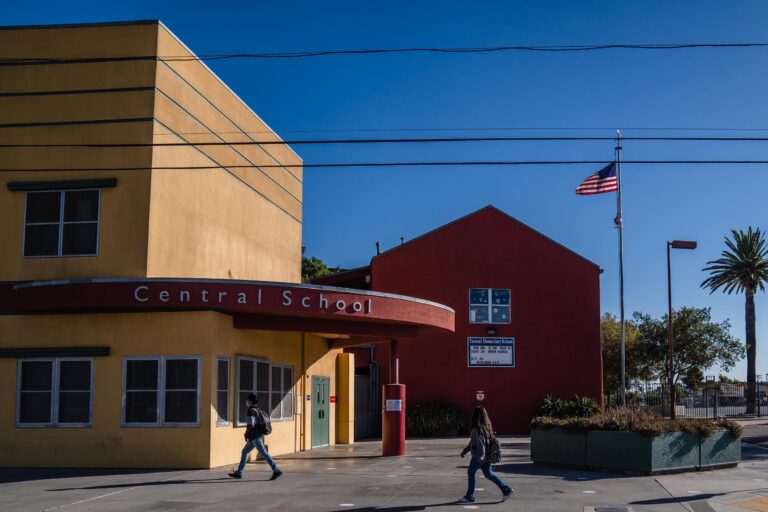San Diego‚Äôs latest wave of school construction offers more than just new classrooms ‚ÄĒ it reflects a growing emphasis on safety and innovative design in educational environments. As the city unveils three newly built schools, experts and community members alike are examining how these facilities integrate advanced security measures with thoughtful architectural planning. This article explores what these new schools reveal about the evolving priorities in school safety and design, highlighting lessons that could shape the future of educational spaces across the region.
Innovative Safety Measures Shaping Modern School Design
San Diego’s latest educational facilities showcase a transformative approach to campus security, emphasizing a balance between protection and open, collaborative environments. These schools incorporate state-of-the-art surveillance systems discreetly integrated into design elements, alongside advanced communication networks that empower staff during emergencies without disrupting daily activities. Beyond technology, site planning focuses on natural surveillance by positioning classrooms and common areas strategically, reducing blind spots and ensuring children remain visible to both staff and peers at all times.
Design innovations also include carefully crafted landscaping and pedestrian flow to control access while maintaining aesthetic appeal. Key features implemented across the new campuses include:
- Layered perimeter fencing with controlled entry points
- Safe zones situated for rapid shelter-in-place capabilities
- Flexible classroom layouts facilitating quick lockdowns or evacuation
- Integrated lighting systems designed for both safety and energy efficiency
| Safety Element | Design Impact | Student Benefit |
|---|---|---|
| Surveillance integration | Minimal visual disruption | Enhanced sense of security |
| Natural surveillance | Open sightlines | Increased supervision |
| Layered fencing | Controlled campus access | Reduced unauthorized entry |
Balancing Security and Open Learning Environments
In reimagining educational spaces, the new San Diego schools illustrate a crucial integration of security measures without sacrificing a welcoming atmosphere. Designers have employed transparent materials and open layouts, ensuring clear sightlines that help staff monitor activities while fostering a sense of community. These features are complemented by discreet security technology, such as cameras and controlled access points, which remain unobtrusive yet effective. This approach demonstrates that safety protocols can coexist with environments that encourage collaboration and trust among students and educators.
Key elements that define this balance include:
- Adaptive Barriers: Movable partitions that secure spaces during emergencies but remain open in daily use.
- Natural Surveillance: Strategic placement of windows and communal areas to maximize visibility and deter negative behavior.
- Community-centric Design: Landscapes and gathering spots that promote social interaction while allowing staff easy oversight.
| Feature | Security Role | Learning Benefit |
|---|---|---|
| Open Courtyards | Encourage visible movement and supervision | Inspire outdoor learning and teamwork |
| Smart Entry Systems | Control unauthorized access without physical barriers | Allow smooth transitions and comfort for students |
| Natural Lighting | Reduce hidden corners vulnerable to incidents | Boost student focus and wellness |
Integrating Technology to Enhance Student Protection
Modern safety protocols in San Diego’s latest educational facilities leverage cutting-edge technology to create secure and responsive learning environments. Schools now incorporate advanced surveillance systems, biometric access controls, and real-time communication networks that connect administration, security personnel, and first responders instantly. These features are thoughtfully integrated into the architectural design to ensure that technology enhances, rather than disrupts, the campus atmosphere.
Beyond hardware, these institutions employ sophisticated software platforms for threat detection and emergency management. Features include AI-driven monitoring to identify unusual activities and automated lockdown mechanisms activated at the push of a button. This seamless blend of technology with physical space is demonstrated in the following safety attributes:
- Facial recognition entry points reducing unauthorized access
- Mobile apps enabling staff and students to report concerns swiftly
- Drone surveillance for large outdoor areas and event monitoring
| Technology Feature | Purpose | Impact on Safety |
|---|---|---|
| AI Video Analytics | Detect unusual movement patterns | Prevents potential threats proactively |
| Biometric Access | Control entry to sensitive areas | Enhances authorized personnel identification |
| Emergency Mobile Alerts | Instant communication | Speeds up evacuation and response times |
Recommendations for Future School Construction Projects
Future school construction must prioritize an integrated approach to safety and design, moving beyond traditional standards. Emphasizing natural surveillance through strategic layout and expansive window placements enhances visibility without compromising privacy. Advanced materials that resist environmental threats, combined with welcoming, open spaces, foster a secure yet inviting atmosphere. Architects and planners are encouraged to collaborate closely with local communities to tailor facilities that meet both safety protocols and cultural needs.
Key recommendations include:
- Incorporating multi-layered security systems subtly blended into campus aesthetics
- Utilizing flexible classroom layouts to adapt to changing pedagogical needs
- Integrating green spaces that support mental wellness and serve as natural buffers
- Prioritizing accessibility enhancements to ensure inclusivity for all students
| Aspect | Design Focus | Safety Benefit |
|---|---|---|
| Perimeter | Natural barriers, low fences | Deters unauthorized entry while maintaining openness |
| Entry Points | Single controlled access with secure vestibules | Improves monitoring and emergency response |
| Outdoor Spaces | Multi-use areas with clear sight lines | Supports supervision and encourages community use |
| Building Orientation | Maximizes daylight and visibility | Reduces blind spots and energy consumption |
In Summary
As San Diego continues to grow, the design and safety features of its new schools underscore a commitment to creating secure, supportive learning environments. The developments highlighted by KPBS reveal how modern architectural approaches and innovative safety measures are being integrated to meet the evolving needs of students and staff. These three new schools serve as models for balancing functionality with protection, setting a precedent for future educational facilities in the region. As communities prioritize safety in schools, San Diego’s experience offers valuable insights into the role of design in fostering both security and a positive educational atmosphere.







